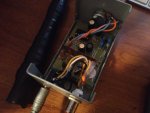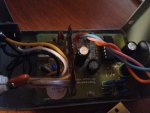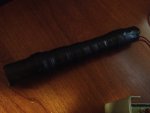- Joined
- Jul 4, 2008
- Messages
- 2,499
- Points
- 113
Ahh I gotcha now Paul. I had a feeling you weren't wrong in what you were saying but you were saying it incorrectly, thus giving the wrong impression. No worries.
As with S_L I've never heard of that term (radiation toxicity) being used in the field (I don't have as much official experience as S_L but I did rad first-responder and some basic rad tech's rad safety courses). Even the term radiation poisoning is frowned upon; the term radiation sickness is what's used.
My apologies too Paul.... not trying to sound dick-ish. I had the CNRC regulations pounded into me doing the RAD-course.
Anyways... I have just built a new scintillation detector with a new mini-CsI/Na crystal array. It's made in Russia. It's given so far very good results with low energy Gamma. pics are coming soon. The 59.8KeV (60KeV) peak is very distinct as well as the compton scatter and the lower energy X-ray(s).
I was testing it using several samples of the isotope. 0.9uCi, 5uCi, 50uCi and a 160uCi sample. The higher uCi sample caused the detector to oversaturate with the sheer counts. Over 4000cps @ 160uCi.. the 0.9uCi-5uCi samples produced a near perfect result over a 5 sec period.
I am using the GammaGrapher nano firmware on a broken DSO nano 1.7v.
It works but the software is full of issues. I am current just doing soundcard spectroscopy with it to get some useable data. so far that has worked better.
Last edited:








